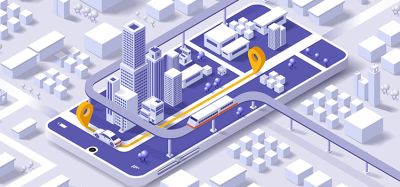Metro do Porto: a success story moving 50 million people every year
- Like
- Digg
- Del
- Tumblr
- VKontakte
- Buffer
- Love This
- Odnoklassniki
- Meneame
- Blogger
- Amazon
- Yahoo Mail
- Gmail
- AOL
- Newsvine
- HackerNews
- Evernote
- MySpace
- Mail.ru
- Viadeo
- Line
- Comments
- Yummly
- SMS
- Viber
- Telegram
- Subscribe
- Skype
- Facebook Messenger
- Kakao
- LiveJournal
- Yammer
- Edgar
- Fintel
- Mix
- Instapaper
- Copy Link
Posted: 18 August 2008 | Ricardo Fonseca, Chairman and CEO, Metro do Porto, SA | No comments yet
Metro do Porto was recently awarded by UITP as the Best New Light Rail System. The company has achieved an incredible 80% increase in its client rate, which recognises that this new mode of transport has had an impact at a variety of levels.
Metro do Porto was recently awarded by UITP as the Best New Light Rail System. The company has achieved an incredible 80% increase in its client rate, which recognises that this new mode of transport has had an impact at a variety of levels.
Metro do Porto was recently awarded by UITP as the Best New Light Rail System. The company has achieved an incredible 80% increase in its client rate, which recognises that this new mode of transport has had an impact at a variety of levels.
It has an immediate effect on the traffic flow throughout the area – 11,000 cars are now out of daily circulation, leading to a substantial reduction in CO2 emissions. This is the largest light rail network built as a single project in Europe, with a monthly passenger figure of approximately five million. The network serves six municipalities over 60km of track, distributed over five lines and 70 stations. The average journey speed of Metro clients stands at around 30km/h, the fastest speed achieved by any type of urban transport and almost double the average speed attained by cars when entering the city. The benefits brought by the Metro also include ‘green spaces’ – 812,000m2 of new gardens and 5,000 new trees have been planted – bringing the introduction of innovative new concepts and technologies.
A more efficient transport network
Greater consideration and accessibility has been given to passengers with reduced mobility, and the use of fast, quiet, comfortable vehicles powered by electricity are factors that ensure a more efficient transport network. This totally new transport system has become an obstacle-free zone. The stations, designed by worldwide well-known Portuguese architect Souto de Moura, have been awarded numerous international prizes. The station areas above ground were extensively renewed as part of this project, as well as huge over ground stretches, which has had a major impact on the renewal of Porto’s Metropolitan Area urban landscape.
High performance
Combining light rail operation in the heart of the historical city centre and also in its peripheral and distant zones, with an 8km tunnel section and 14 underground stations – in order to get high performance on the operation service and also to invite people to walk from their home or their work to the nearest station – represented a major challenge that was, just six and a half years after the beginning of the construction, successfully achieved by Metro do Porto. Since the very first day, we tried to create with citizens a relationship based in trust, total transparency, and precision of information. Also, the success of this project reflects a global approach to philosophy, deeply sustained in accessibility, total design, information and invitation, beyond the efficiency of the transport system itself. The Metro do Porto conception and quality design were key-factors to acquire the best functionality and maintenance, above all.
Intermodality
Integrating the different methods of transport into one system has necessitated the construction of suitable transport interfaces. Due to its direct connections to three main-line railway stations, public and private bus networks and Porto international airport, as well as its integral station car-parks, Metro do Porto offers its users the concept of intermodality in practice.
Andante – ticketing made easier
Another key to the success is the Andante system – an advanced contact-free ticketing system – accepted on the Metro, railways and public and private bus routes, which involves the use of a rechargeable single ticket, topped up as needed. Under the Andante system, clients have a single tariff for each zone, being able to choose which of the available modes of transport they would like to use. Under the Andante system – managed by a consortium created by Metro do Porto, STCP (public bus operator) and CP (public train operator) – the price of each journey depends only on the distance traveled and not on the method of travel chosen.
Creating new mobility behaviours
Commercially, Metro do Porto has to be available wherever people are and its operational model has to be adjustable to the expectations and demands of people. Metro do Porto, as part of the city’s life, works to answer theses demands and is able to offer special operations according to special occasions. Increased public transport demands may often occur for such moments as football matches, concerts and mass events. Metro do Porto is creating new mobility behaviours, increasing public transport demand and getting thousands of new clients.
Making an impact
The construction of a light rail system for Porto, approved in 1996, has been the decision that has had the most impact in recent years on the lives of more than two million Portuguese citizens. The entire first phase of the network – an investment of over €2 billion was built between 2000 and 2006. Work started in 2000, and from June of that year, the myth of the impossibility of building tunnels in Porto was put to the test – and shown to be false. The tunneling machine reached Trindade in October 2002, after having opened up 2.3km of tunnel linking it to Campanhã. By the end of 2003, two more tunnels had been built – Salgueiros to Trindade, and Trindade to D. Luiz bridge. On 7 December 2002, the Blue (A) line of Metro do Porto was officially inaugurated, running a regular and continuous service between Trindade and Senhor de Matosinhos. Full commercial service on this line began on January 2003. The project developed fast, with the rate of successful implementation of the system taking many by surprise. In 2004, the extensions of the Blue Line to Campanhã and Estádio do Dragão were completed, in time for the Euro 2004 football championship. The number of passengers on the Metro was growing at a rate of 65% per year, and was continuing to rise. The inauguration of the Red, Green and Yellow lines, in 2005, and of the Violet line, in 2006, concluded the first phase of the system. Six lines, 60 kilometers (eight of them underground), and 70 stations are now in full operation.
A proud public transport operator
Metro do Porto continues to expand and develop, taking Metro service to important and populated areas. New routes are being projected and built and a permanent and close relationship with passengers ensures that consumer’s needs are being met. These are all aspects that represent the social spirit of the Metro and Metro do Porto is proud of its work as public operator and one of the leaders in the field of public transport in the Porto Metropolitan Area, as well as in Portugal as a whole.








